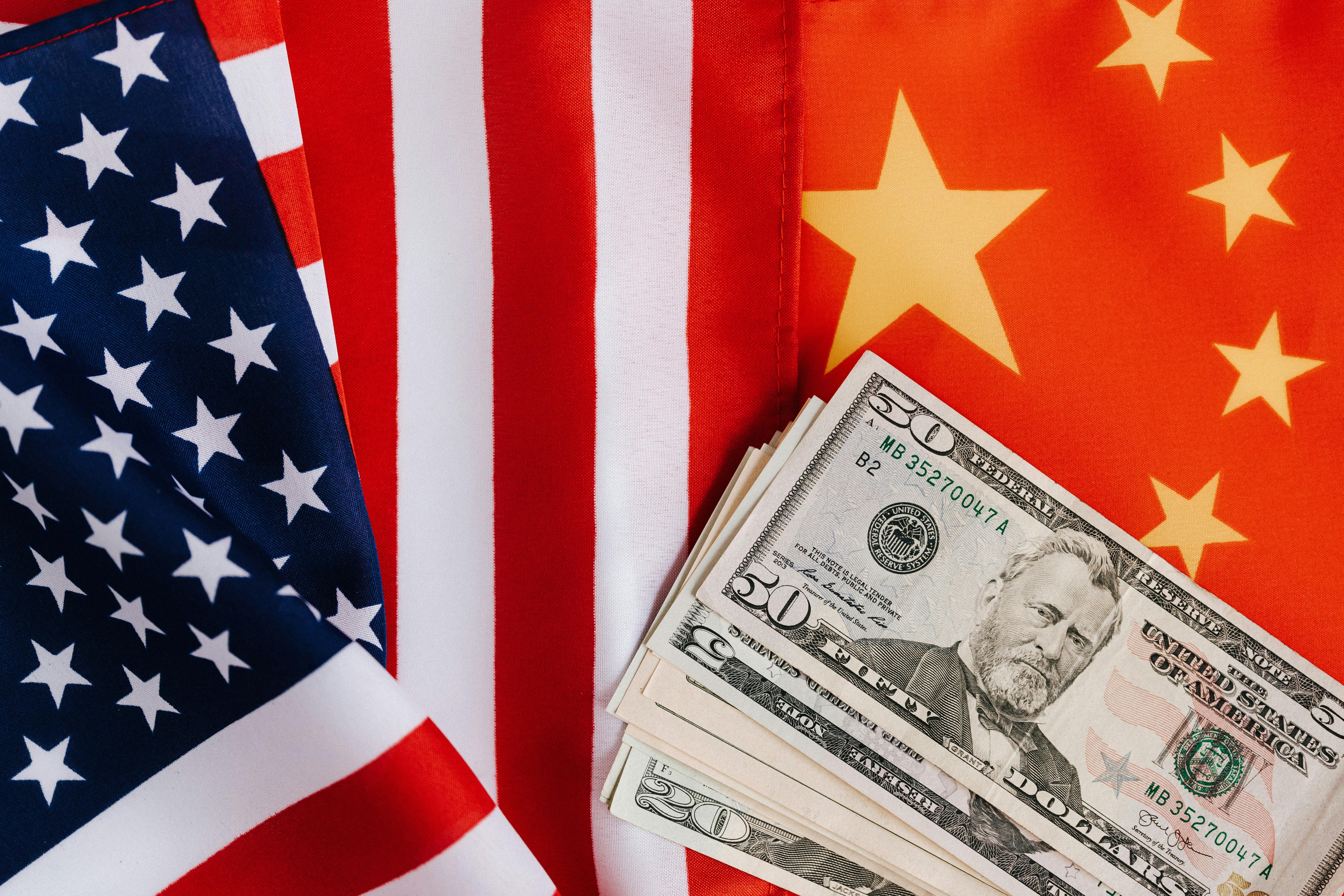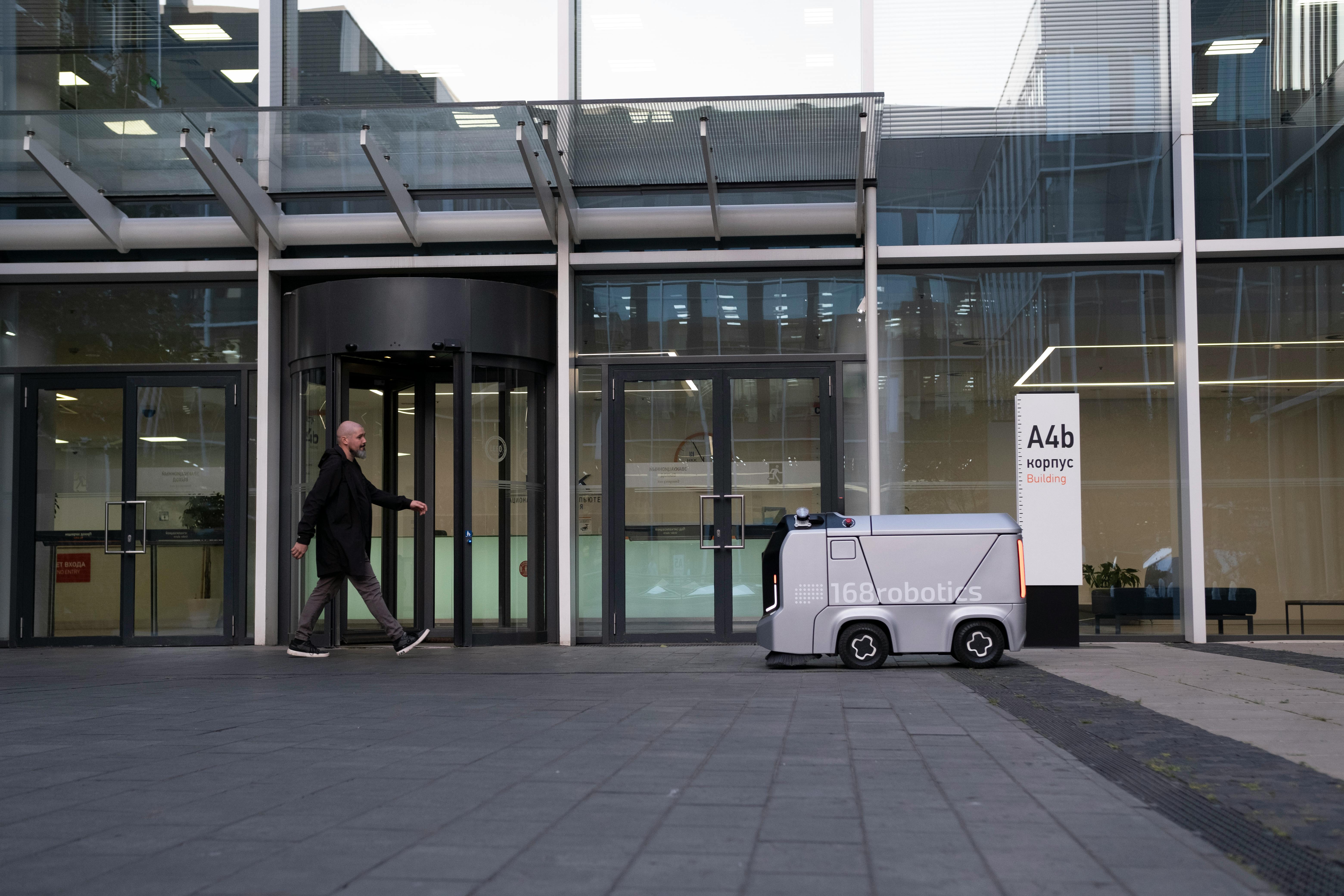Whos wining the AI war in 2023 and beyond?
- The U.S. invests heavily in AI with $100 billion from major firms (Microsoft, Google, Amazon, Apple) in 2022-2023, leveraging capital markets and boosting innovation with NVIDIA's semiconductor tech.
- The Biden Administration works on AI security, but talent retention is challenged by restrictive immigration policies.
- China aims to lead AI by 2030, with government-backed strategies focusing on surveillance, societal management, and R&D dominance (40% global journal publications, 60% patents).
- Leading Chinese firms (Baidu, Alibaba) excel in AI commercialization despite data constraints.
- Both nations face unique hurdles: U.S. tech policy gridlocks and China’s censorship.
- Collaboration could prevent AI conflicts, fostering shared advancement.
- The global AI race mirrors historical rivalries, urging ethical and cooperative progress.
Who’s winning the AI war in 2023 and beyond? This tech battle shapes our world, from Silicon Valley to Beijing’s bustling hubs. Which countries lead, and what strategies secure their spots? Our post digs into how the United States and China take charge with distinct approaches. Discover the tech breakthroughs redefining AI, the companies driving innovation, and what the future holds. Explore the AI race and its impact on our global landscape.
What Are the Key Strategies of Leading AI Countries?

The race for AI dominance revolves around the strategic maneuvers of leading countries like the United States and China. Each has its own distinctive approach aimed at becoming the global leader in artificial intelligence. The United States leverages its robust capital markets and technological assets, while China employs a state-centric strategy focusing on integration into governance and society. But how are these strategies shaping the AI race today?
United States: Leveraging Capital Markets
So, how is the United States leveraging capital markets for AI development? Precision: American firms are investing billions into AI research and development. Companies like Microsoft, Google, Amazon, and Apple have poured an astounding $100 billion into AI from 2022 to 2023. This massive investment streamlines technological advancements and maintains a competitive edge with emerging tech. Importantly, NVIDIA, a dominant player in semiconductors critical for AI, adds weaponry to this arsenal. NVIDIA's cutting-edge chips are essential for the execution of AI models, making it a cornerstone for America’s strategy.
In addition, the Biden Administration has issued executive orders on AI security, although legislation often lags behind rapid tech changes. Yet, the United States recognizes the critical value of skilled professionals but struggles with talent retention due to restrictive immigration policies.
China: A State-Driven AI Strategy
What strategies truly define China’s state-driven approach to AI? Precision: China's government oversees AI initiatives with a focus on surveillance and societal management. The aim is to lead in AI by 2030. This strategy intertwines technological progression with government goals, striving to enhance national security and influence. China stands out by dominating AI publications and patents, holding 40% and 60% of global shares, respectively.
Moreover, Chinese firms like Baidu and Alibaba are excelling in creating and implementing generative AI. These companies ensure AI applications penetrate various sectors, driving economic growth. Despite this progress, China faces unique challenges due to strict regulations and data limitations. Censorship poses a significant hurdle in maximizing AI’s potential in some sectors.
Comparing Strategies in the Global AI Landscape
So, how do these strategies compare on the international stage? Precision: Both countries offer strong yet contrasting dynamics in AI. The United States’ private-sector-led strategy ensures innovation remains diverse and dynamic. However, China's centralized approach can swiftly align AI innovations with national objectives. Each method has its advantages, yet both face distinct challenges.
The competitive nature of the U.S. market fosters innovation and initiatives that often push technological boundaries. Conversely, China’s extensive state collaboration allows for rapid deployment of AI across various industries, especially where security and governance are intertwined. However, regulatory hurdles in both countries could hamper their progress; the U.S. faces tech policy gridlocks, while China manages heavy-handed scrutiny and data controls.
Is there a way for both countries to find a cooperative path? Precision: Collaboration can avert AI conflicts and encourage a balanced global AI future. This symbiotic approach could lead to shared knowledge, preventing technology from becoming a zero-sum game. The potential for this collaboration sets a foundational tone for the next phase in the AI landscape, creating opportunities to utilize AI for peaceful global advancements.
In Stanford's AI Report, the global arc of AI strategies is explored with deep insights, urging nations to harness these technologies ethically and effectively. Ultimately, both the United States and China carry the responsibility and the opportunity to shape the future AI path through their distinct strategies, with possibilities of mutual advancements simmering on the horizon.
Which Technological Advancements are Shaping the AI Race?

The AI race is driven by groundbreaking advancements each year. One major breakthrough is the development of large language models (LLMs). LLMs are changing how we interact with technology by understanding and generating complex human language. This allows for more natural conversations with machines, making AI more useful in everyday life.
In the United States, technological progress relies heavily on innovations in semiconductors. Companies like NVIDIA are at the forefront, producing chips essential for AI tasks. These chips allow AI systems to process massive amounts of data quickly and efficiently. The U.S. has placed export restrictions on these technologies, helping maintain its lead and slowing down China's access to the latest advancements.
Meanwhile, China is making significant strides in its own way. Chinese companies, such as Baidu and Alibaba, are key contributors to AI's growth. Their focus on commercializing generative AI leads to the widespread use of AI in various industries. Despite facing stricter data and ideological controls, these firms have grown rapidly, developing over 200 LLMs.
The AI realm not only hinges on breakthroughs but also growing efforts in research and development. In China, the number of AI journal publications and patents is impressive, accounting for 40% and 60%, respectively. These contributions highlight China's dedication to leading in AI innovation, with a goal to become the global AI power by 2030.
US advancements in AI are also shaped by significant investments. Tech giants like Microsoft, Google, Amazon, and Apple have poured approximately $100 billion into AI over 2022 and 2023. These investments fuel the rapid development of AI technologies and ensure the U.S. remains competitive on the global stage.
Despite rapid technological advances, both the U.S. and China face unique challenges. For the U.S., talent retention is a concern, as restrictive immigration policies could drive skilled professionals elsewhere. Conversely, China must balance innovation with regulatory demands that could stifle creativity.
Overall, the current technological landscape sets the stage for intense competition between the U.S. and China. While their approaches differ, both nations aim to harness AI for more than just economic gains. Each seeks to shape AI's future, recognizing its potential for societal and military applications. In this race, ongoing innovation promises to keep pushing the boundaries of what AI can achieve.
Who are the Leading AI Industry Players?

In 2023, the leaders in the AI space were making waves. You may wonder, which companies are at the forefront of AI innovation? The United States dominates with industry giants like Microsoft and NVIDIA taking lead roles. Microsoft has invested billions in AI, especially in enhancing its AI capabilities across its vast product range. Nvidia, meanwhile, creates the powerful chips that fuel AI models worldwide, making them a core player in the field.
These companies are not working in isolation. They drive advances in large language models (LLMs) and other game-changing technologies. For instance, Microsoft has partnerships with leading AI research labs to harness cutting-edge advancements. Nvidia chips continue to be indispensable in data centers, enabling rapid AI computations. These strategic moves keep the U.S. in pole position in this high-stakes race.
Now, turn your gaze toward the East. What role do Chinese corporations like Baidu and Alibaba play in generative AI? These companies emerge as key players, turning the AI battle into a global face-off. Baidu and Alibaba each have a complex AI ecosystem, with Baidu pioneering autonomous driving and Alibaba leading in AI cloud services. Their innovative applications, such as voice recognition and language processing, push the boundaries of what's possible.
China's approach differs from the U.S., largely due to its centralized strategy. Their government investments and focus on commercializing technologies fuel these corporations to innovate faster. When conducting AI research, they even lead globally in AI publications and patents. With over 200 Unique Language Models (ULMs), Baidu and Alibaba are actively integrating AI into every facet of their operations, from e-commerce to advertising.
You might ask, how do U.S. tech giants like Microsoft and NVIDIA influence the AI industry? Their influence stretches far beyond the surface. Significant capital investments enable them to lead in innovations, secure intellectual property, and steer technology directions globally. Microsoft’s software platforms integrate AI effortlessly into everyday operations, making businesses more efficient.
Meanwhile, Nvidia's semiconductors are central to the development and training of AI models. Their chips are pivotal in transforming raw data into insights and decisions, remaining unmatched in graphical processing power. They aren't just hardware makers, but enablers of future AI advancements.
Understanding the role of these top AI companies helps illustrate the bigger picture. While the U.S. and China seem locked in an AI arms race, they also explore strategic avenues for cooperation. This opens up avenues to prevent conflicts while pushing the boundaries of how AI benefits humanity.
Amid rapid changes, global competition grows intense with top AI companies taking center stage. Ongoing challenges, such as regulation and talent retention, shape this landscape. In this race, the leading AI companies strive to remain ahead, adapting and evolving as both challenges and opportunities arise. Indeed, in the AI domain, staying at the forefront requires constant reinvention and insightful vision.
How Are U.S. and China's AI Capabilities Compared?

When we consider the current AI landscape, two giants dominate: the U.S. and China. The competition between these nations resembles a tech race akin to the Cold War era, where each aims to lead for economic and military clout. It's an engaging narrative when we examine why the U.S. is winning, despite China's speed in AI growth.
Let’s first explore why the U.S. commands the AI space. The U.S. holds a competitive edge through large language models (LLMs), with substantial investments from major companies. These investments reached nearly $100 billion in 2022 and 2023. Tech leaders like Microsoft, Google, Amazon, and Apple significantly contribute. The dominance of NVIDIA in semiconductors further cements the U.S. position. These chips are vital for AI, and tight export controls advance the U.S. lead, keeping China trailing in processing technology.
The U.S. also benefits from a supportive environment of innovation and free thought. However, the need for legislative adaptation is crucial. The Biden Administration has issued orders for AI security, yet legislation lags behind tech shifts. Nonetheless, the private sector's drive and talent pull keep pushing the U.S. ahead.
In stark contrast, China’s approach is state-driven. China prioritizes surveillance and societal management, underpinned by its AI strategy that aspires to global leadership by 2030. Despite lagging in some tech areas, China shines in research and development. It commands the highest share of AI journal publications and patents, with 40% and 60%, respectively. Furthermore, China has produced over 200 LLMs, despite facing challenges like data restrictions and ideological constraints.
China's commercial sector isn’t dormant either. Companies like Baidu and Alibaba are pioneers in generative AI, adopting their models across various sectors. But potential regulatory hurdles are a concern for their technological progress.
The U.S. and China share challenges and opportunities. Both nations grapple with talent management. The U.S. faces hurdles in retaining talent due to stiff immigration policies. On the flip side, China navigates a strict regulatory framework that can stymie creative advances.
An interesting facet of this duel is the possibility of a non-zero-sum outcome. A powered collaboration could avert conflicts triggered by AI advances. Reflecting on this, it's clear that both nations have room for mutual growth and innovation. Cooperation could be key, potentially transforming competition into a more enriching global partnership.
In examining these dynamics, I find it's not just a U.S. versus China narrative. It’s about understanding how diverse approaches can shape AI's future. It's fascinating to see how this competition pushes technological advancements. What's next? We’ll be watching to see if the pace of growth matches the fast-lane trajectory both nations seem to be cruising on. And as they say, may the best AI win.
What Are the Future Predictions for the Global AI Landscape?

What are the potential outcomes of the AI race between the U.S. and China? Precision: The U.S. might maintain its edge with advanced tech and open markets. Yet, China could outpace in specific sectors due to state-led initiatives and population size. Both nations aim for dominance, akin to the Cold War's nuclear race, impacting both economic and military power.
The AI arms race follows the Cold War's pattern but with algorithms instead of warheads. The U.S. excels in language models, pouring billions into sector growth. Institutions like Google, Microsoft, and Apple drive this with vast investments. NVIDIA's role in semiconductors crucially supports this, ensuring the U.S. stays ahead in tech. Meanwhile, the American government, through President Biden's orders, attempts to keep AI development secure. Still, legislative support struggles to keep up with the fast tech pace.
China's approach differs, heavily relying on state oversight and strategies. Their goal is to lead the AI world by 2030, focusing heavily on tools for surveillance and social control. In AI scholarly output, China dominates, producing many crucial papers and patents. Their advances include commercializing AI through giants like Baidu and Alibaba. However, China's closed data system and political constraints pose unique challenges.
How might geopolitical factors influence future AI developments? Precision: Global tensions can both hinder and drive AI breakthroughs for both nations. Rivalry encourages rapid tech progress but raises risks of misunderstanding and conflict. U.S. export laws keep China a generation behind in some tech, causing likely stubborn friction. But collaboration, though complex, could avert potential AI-triggered confrontations. Shared interests, like climate change or pandemic response, could be platforms for unity.
What economic impacts can be expected from continued AI advancements? Precision: Continuous AI advancement can boost innovation but deepen economic divides worldwide. Innovations may create shifts, revolutionizing industries from healthcare to transport. Nations might face job losses in some sectors while generating new avenues where machines lack human touch. The U.S. leads in tech but grapples with immigration laws; skilled talent may move to flexible regions. Meanwhile, China's heavy hands might hinder creative AI adaptations. A global AI divide could intensify, with advanced players surging ahead economically.
Despite these differences, both regions see AI's potential for broad industry application. U.S. companies reap rewards with AI-enhanced services, while China leverages its market scale. The path is clear: AI will continue shaking economic and geopolitical stages. By steering developments ethically and cooperatively, nations can better face the AI-driven future. The world stands on a digital pivot, with AI's promise shimmering on the horizon, inviting mindful progression for society's collective good.
Conclusion
We explored how the U.S. and China lead in AI dominance. The U.S. drives AI with capital markets, while China uses state-driven strategies. Technological advancements, such as semiconductors in the U.S. and Chinese innovations, shape the AI race. Giants like Microsoft, NVIDIA, Baidu, and Alibaba play pivotal roles. Despite China's growth, the U.S. stays ahead in development. Both countries continue to compete fiercely. Looking ahead, geopolitical factors will heavily affect AI growth, with significant economic implications on the horizon. The AI race remains unpredictable but crucial for future tech landscapes and markets.







